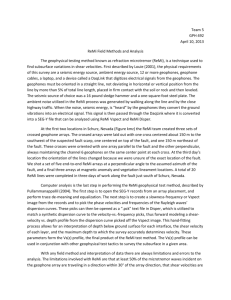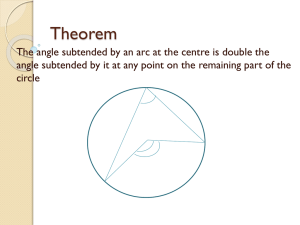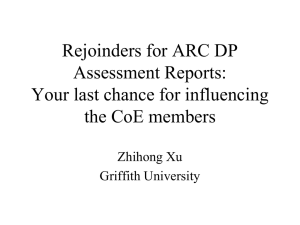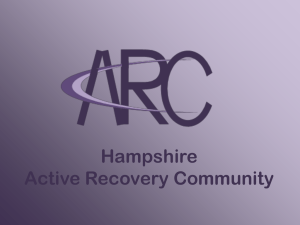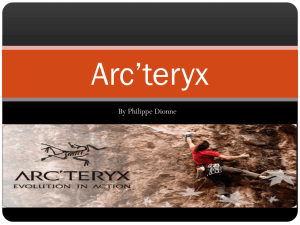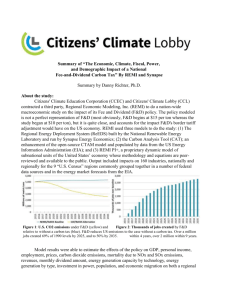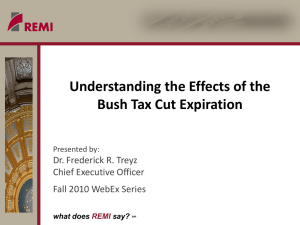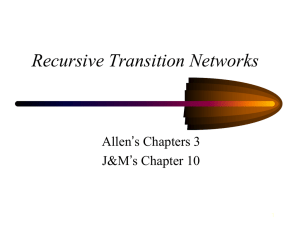TranSight Introduction - the Atlanta Regional Commission
advertisement
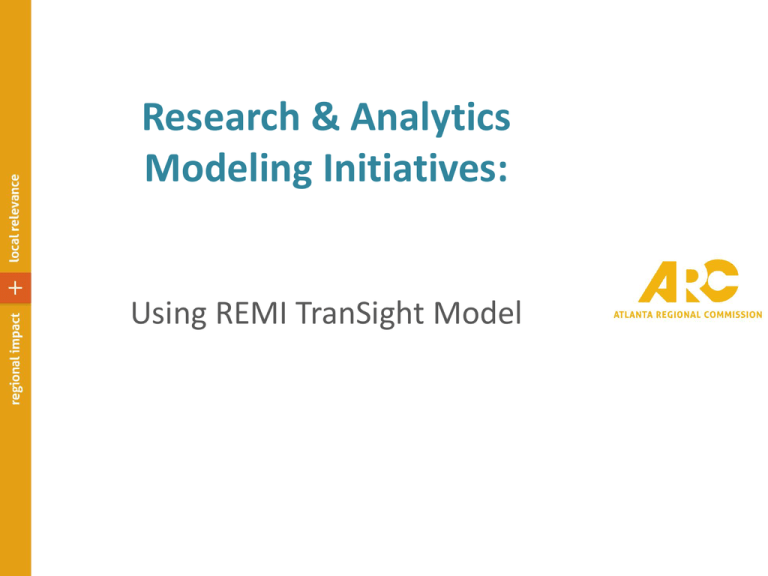
Research & Analytics Modeling Initiatives: Using REMI TranSight Model OUTLINE • Purpose • Introduction to REMI PI+ and TranSight • Model Uses for ARC – Linking models – General concepts – Model applications • Model Demonstration ARC OBJECTIVES • Purpose – Produce local long-range demographic, employment and economic forecasts for the 20-county ARC region • Intent – Dedicated to informing public and private policy decisions – Focused on research based analysis – Orient stakeholders and decision makers on socioeconomic and transportation impacts to our Region • Goal – Continue to lead in regional economic forecasting and policy analysis – Provide economic development impact plans and assess travel demand changes to the region’s transportation network INNOVATIVE APPROACH • Collaborating and create linkages for model application and compatibility • New methods for rebranding and financing our transportation system • Bold decisions demand creative, sophisticated and robust tools capable of supporting these processes • ARC engagement in performing scenario planning and economic analysis to consult, measure and capture specific impacts to our Region – Economic impact analysis to assist and inform benefits to investment endeavors • Business relocation and major developments in the Region – Assess projects of regional impact MODEL DATA DEVELOPMENT OBJECTIVES • Conduct potential project prioritization plans – Assist in developing a project list • Perform sensitivity tests of the model and projects – Determine the model’s effectiveness for further consideration – Measure the reasonableness of economic activity and transportation efficiencies of qualified projects • Develop an economic impact study and analysis report on LPA projects; economic developments; projects selected for the TIP and RTP; and various regional market studies – Final documentation of findings and benefits of local and regional impact studies • Produce small area control totals; SE data for TDM and regional long-range forecasts • Produce data for inter-departmental work programs and external ARC counterparts REMI MODELS • The next generation Policy Insight® model • Comprehensive modeling estimating economic and demographic effects • Up to 169 industry sectors across 3,089 U.S. counties including 6,000+ fully adjustable policy variables updated yearly • Comprehensive tool for evaluating the total economic effects of changes to transportation systems • Integrates travel demand data, data on emissions, safety valuation factors, etc, and 3 additional transportation-related cost matrices with PI+ DISTINGUISHING MODEL FEATURES • Model incorporates four unique quantitative methodologies • Each model is custom built to match regional client specificity • Measures economic impacts and responsive demographic and economic changes over time Integrated Dynamic Customized Structural • Incorporates transparent and robust economic linkages built on proven methods and theory INTEGRATED MODEL Input/Output Econometric REMI PI+ Computable General Equilibrium New Economic Geography DYNAMIC MODEL 250,000 240,000 230,000 220,000 210,000 200,000 190,000 180,000 170,000 160,000 150,000 Control Forecast Alternate Forecast STRUCTURAL MODEL ECONOMIC IMPACT MODEL TRANSIGHT-SPECIFIC FEATURES [INPUTS] • Travel demand data: Region-to-Region VMT, VHT, and Trips • Cost matrices: transportation, commuting, accessibility • Simulation parameters: emissions (5 types), value of time, gov’t funding, fuel efficiency (up to 79 MPH), safety (3 types), operating costs, occupancy • Multimodal TRANSIGHT-SPECIFIC FEATURES [OUTPUTS] • Benefit-Cost Analysis: – Customizable – Use different Discount Rates – Evaluate in different years • Transportation Summary: Commodity and labor Access Indices, relative cost factors • Domestic Trade: Flows and Shares • All Economic and Demographic Indicators: all outputs (as well as inputs) from REMI PI+ built into model THE NEED FOR DYNAMIC ECONOMIC ANALYSIS • Economics and demographics of a region are changing over time – Projects effect today much differently than the future • Scoring projects based on travel demand and economics is a complete system • Every region’s travel network and economy is different ARC MODEL LINKAGES • Speed deltas by househld/commer cial travel mode • Network changes • Ridership Travel Demand Model Travel Demand Module • No-build & Build • TDD Files • Transportation Matrices • Policy variables • Assumptions • Calibrations • Analysis Simulations FRAMEWORK AND ASSUMPTIONS • Each project required two model runs • Establish a base network; projects added to base • Generate travel demand runs; produce TranSight model runs • Assume an opening year for projects • Assume network conditions are the same for all projects until opening year • Identify study and/or affected region(s) for evaluation PRIORITIZATION PROCESS • Provide multi-regional and county-level comparative analysis of project results against a baseline or no-build travel scenario • Intent is to show transportation and economic investment influences at a regional and sub-regional level • Estimate project’s value by each affected county and on the Region SENSITIVITY ANALYSIS PROCESS • Three projects submitted according to its plan, objective and impact on the region • Illustrate project’s economic changes from baseline and influences locally • Quantify inter-regional and region benefits • Standardize policy variables used for evaluating county level economic activity and mass transit investment STUDY SPECIFICATIONS • MARTA Mass Transit Investment – 2 Counties; 1 (10-County) Region – One cent sales tax collection by affected counties – 100% return – 3 regional projects • Partnership Gwinnett Strategy Initiative – Target industry cluster analysis – Adding 7,000 high-paying jobs to the county • Economic Development – Economic development study – $27M capital investment and $4.3B in sales added to the county and region – 10 year government abatement incentive on real and personal property [Model Demonstration] MODEL APPLICATIONS Economic Development Transportation Environment Health Care •Potential population shifts, migration patterns and employment changes on future investment and housing stock; benefit-cost analysis •Travel demand analysis; transportation improvements impact and mitigation strategies •Environmental Planning Department storm water analysis •Health Care Reform Policy analysis Taxation •Analysis of the Regional Transportation Referendum Tourism •Visitors and out of region revenue impact/residential burden relief study Energy •Georgia Power economic migration study for projected capital improvement study CONTACT & RESOURCE INFO Colby Lancelin clancelin@atlantaregional.com Principal Planner, Research Division 404.463.3322 office Atlanta Regional Commission www.atlantaregional.com


